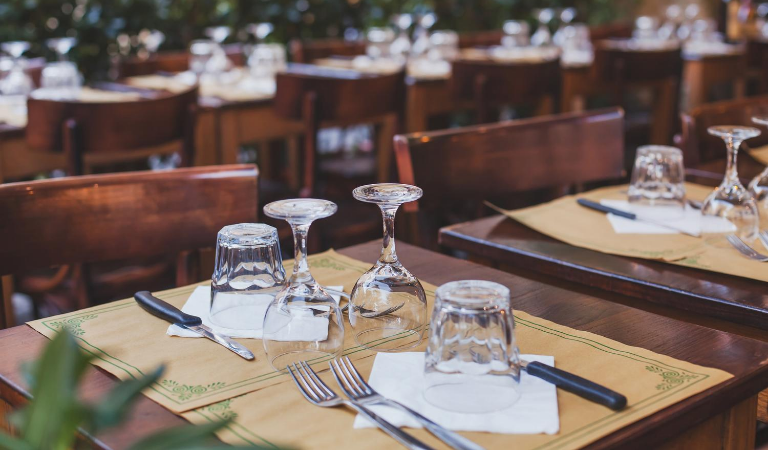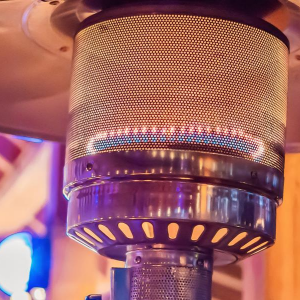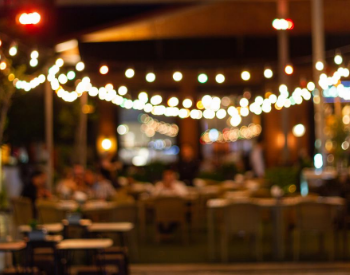Providing customers with an alfresco dining experience is a great way to draw pedestrian traffic into your restaurant. Passersby can get a sense of the type of service and hospitality you offer and will be tempted to cross your threshold. Outdoor dining is also a great way to advertise your establishment. Potential customers will get to see the atmosphere of your restaurant and take a look at the food you serve. Not to mention, an outdoor dining area increases seat capacity and therefore increases your revenue. In order to get all of these benefits, follow our instructions on how to implement outdoor dining in your restaurant.
Do I Need Permits To Create An Outdoor Dining Area?
Before you begin to add extra seats to a patio, sidewalk, or rooftop, you may need to acquire permits and ask permission from the appropriate authorities first. Here's who to contact for more information:
Landlord
If you do not own your building, you must first speak with your landlord. They must grant you permission to create an outdoor area. However, a landlord might not be too keen on the idea since an outdoor area can create liability, but explaining how an outdoor area can increase revenue and add to their property value might persuade them.
Insurance Company
You must also speak to your insurance company to see if they insure outdoor areas such as patio coverage. If you are intent on creating a patio area, you should seek an insurance plan that covers it.
Local Municipality & Zoning Commission
If you own your establishment, you can proceed to ask your local municipality what requirements and permits your business needs in order to create an outdoor area. Sometimes planning boards will deny permits because they prohibit outdoor dining areas in certain commercial zones. When planning to make additions to your building, you will also need to contact the local zoning commission.
Health Department
Customers can also see an outdoor eating area as a place to bring their pets or to smoke. If you wish to allow them to do either, you will also have to ask your local health department for permission. The department will typically send an inspector to determine if the area is safe for dogs or smoking.
Licensing Authorities
An outdoor bar is a great addition to an outdoor area. However, you will have to acquire an outdoor
liquor license even if you already have a liquor license. The same goes for cooking outdoors. Commercial
businesses need an outdoor cooking license in order to safely cook food in an outdoor area.
What Outdoor Dining Equipment Do I Need?
Outdoor Furniture
When it comes to picking furniture for an outdoor eating area you must keep four things in mind:
- Style: Look for chairs and dining tables that match the style of your restaurant’s theme. In other words, they should look like an extension of your indoor area.
- Functionality: As a requirement, your furniture should be weatherproof and stackable. Plus, at the end of the day, it will be easy to stack and store chairs inside of your restaurant in order to avoid theft or damage.
- Space: The amount of space you have available in your outdoor area will help you determine how many tables, chairs, and other pieces of equipment you may need. Remember to make room for waiters and customers to walk between tables.
- Comfort: If you can, try out chairs and tables before you buy them to see if they are comfortable. Customers that are uncomfortably seated might not be able to enjoy their meal and will think twice about revisiting your restaurant.
Outdoor Coverings
As much as customers might enjoy the weather and the sunshine, they still want to be protected from the harsh midday sun or precipitation. Outdoor areas typically use umbrellas that are part of the table or stand on their own to provide shade. Umbrellas are the preferred choice of most restaurants because they are less costly, protect customers from the rain, and can be easily brought indoors at the end of the day. However, there are more options to consider that might prove a better match to your restaurant’s theme, such as:
- Awnings
- Pergolas
- Shade Sails
- Canopies
- Gazebos
- Pavilions
Heating & Cooling Equipment
There will be times when the temperatures can drop or reach all-time highs and yet customers will prefer to be seated outdoors. In these types of circumstances, special heating and cooling equipment will be required to keep customers comfortable.
Heaters
A heater is an appliance that radiates heat and is powered by propane, gas, or electricity. Depending on their design, they can be hung, placed next to tables, placed on tables, or mounted on walls. These are great for keeping customers warm on a chilly day, but they must be operated according to instructions and be properly maintained.
Fans
Installing a series of fans in your outdoor area is an easy way to keep customers cool on a hot summer day. You can place freestanding fans throughout your area or have outdoor ceiling fans professionally installed on your outdoor covering if possible.
Misting Systems
If you want to take cooling a step further, consider a misting system that periodically releases a very fine mist to refresh customers. Make sure your restaurant misting system uses anti-drop and flash-evaporation technology to keep customers and food from getting wet.
Additional Equipment
If you have enough space, you can include a few extra pieces of equipment to create new ways to keep
customers comfortable. Consider the following additional equipment to include in your outdoor area:
- Lighting: A string of fairy lights or tiki torches can create a certain ambiance that will impress and attract customers. Lighting equipment also allows you to extend your hours of operation late into the night.
- Insect zappers/fly traps/mosquito nets: Insects can be a great pester in an outdoor dining area as they can disgust or bite customers. Using different methods or a combination of equipment is the perfect way to relieve customers of insects.
- Curtains: If you want to give customers some privacy, hang curtains between tables to make their experience more intimate. You can also use curtains to create an outdoor VIP section.
Comfort Is Key
When creating your outdoor eating area, put most of your focus on making it as comfortable as possible for your customers. You can easily achieve this as long as you have acquired all the permits and equipment necessary. If done right, a great outdoor area will entice customers to enter your restaurant, allow you to increase the seating capacity, and bring in more revenue.









